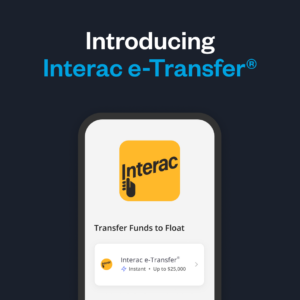Update: At Float we are committed to protecting our customers’ personal and financial data. With that commitment, we’re excited to announce Float’s SOC 2 Type 2 certification as of August 9, 2023.
To achieve this certification, an independent third party auditor reviewed Float’s security controls and confirmed what we’ve always known: Float provides enterprise-level security with the highest standard of compliance.
At Float our team is committed to protecting our customers’ personal and financial information and ensuring the highest level of security. That’s why we’re excited to continue to make Canada’s smartest corporate card also the safest with our recent SOC 2 Type 1 compliance audit.
Float’s achievement of SOC 2 Type 1 compliance is a result of our team’s unwavering commitment to security and excellence. By undergoing a rigorous audit process, Float has demonstrated its ability to meet the stringent requirements of the SOC 2 framework.
Customers can rest assured knowing that Float has taken significant steps to ensure their data is protected at every level. The achievement of SOC 2 Type 1 compliance is just the beginning for Float, as our team continues to invest in maintaining and enhancing security practices.
In this post, we’ll explore what SOC 2 compliance means, why it is important, and how SOC 2 Type 1 compliance is yet another step towards security and excellence at Float.
What is SOC 2 Compliance?
SOC 2 (System and Organization Controls 2) is a widely recognized auditing standard developed by the American Institute of Certified Public Accountants (AICPA). It focuses on evaluating the security, availability, processing integrity, confidentiality, and privacy of an organization’s systems and data. SOC 2 compliance demonstrates that a company has established and follows strict policies and procedures to ensure the security and privacy of customer data.
The Importance of SOC 2 Compliance
Enhanced Data Security: SOC 2 compliance assures customers that Float has implemented rigorous safeguards to protect sensitive information. This includes measures such as access controls, encryption, monitoring, and regular security assessments.
Increased Trust: Achieving SOC 2 compliance demonstrates Float’s commitment to data privacy and security. It provides customers with peace of mind, knowing that their financial and sensitive information is handled with utmost care and in accordance with industry best practices.
Regulatory Compliance: SOC 2 compliance helps organizations meet regulatory requirements, especially when dealing with sensitive financial data. Adhering to established security and privacy standards ensures Float is well-positioned to address the needs of businesses operating in highly regulated industries.
SOC 2 Type 1 Compliance: A Step Towards Excellence
Float’s SOC 2 Type 1 compliance reflects our team’s dedication to providing a secure and reliable platform for our customers. During the SOC 2 Type 1 audit, an independent third-party assessor thoroughly evaluated our organization’s systems, processes, and controls to ensure they meet the established criteria and so your business can have confidence in the safety and security of your financial information with Float.
Float’s commitment to security goes beyond compliance. We have built our product from the ground up with control at the centre of everything we do – giving your team proactive control over who is able to spend what. Over the past few months our team has released features to ensure Canadian finance team have the ultimate visibility and control over company spending:
- MFA and SAML SSO
- Float offers both Multi-Factor Authentication and SAML Single Sign-on for customers to ensure only authorized users have access to Float accounts
- Float Cards 2.0
- Issue cards to employees worry-free with new $0 card balances and the ability to create or approve Recurring and Temporary limits
- Merchant Controls
- Proactively manage spending by limiting card transactions to specific merchant categories
- Reporting
- Get real-time visibility into company spending with Float’s Reporting feature that allows team’s to spot anomalies before it’s too late
Float’s journey towards excellence and continuous improvement is only just beginning – stay tuned for more on how our team is investing in security to ensure that businesses across Canada can confidently rely on Float for their corporate card spend.
Not yet a Float customer? Book a demo with our team here and we can show you how Float can help simplify (and control) your company’s spend.



















